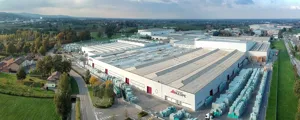Beyond form: the enchantment of matter
Architect Michela Ekström
Matter is the first language of architecture. It is not a technical choice but a layered narrative, a memory that settles over time. A rough stone wall absorbs the warmth of the sun. The worn wood of a staircase creaks under the weight of years. Concrete allows rain and wind to smooth it down. Every surface holds the traces of those who have passed by it, who have brushed against it or lived it. To inhabit a space is not simply to occupy it but to recognize the muted voice of matter, to read the stories etched in light and shadow, in the cracks left by time.
In The Poetics of Space, Bachelard speaks of houses that remain within us. These are places that do not exist only in memory but continue to live through the sensations of a touch, a scent, a surface that welcomes us. Architecture, then, is not purely something visual—it is a grammar of textures and volumes, of solids and voids, of surfaces that absorb and reflect the world. Matter is never neutral; it resonates, evokes, enchants. A glass pane that fogs up between inside and outside. An iron plate that oxidizes with the seasons. A stone that warms and cools like a living body. Architecture speaks through these signs, making its presence felt over time.
Yet today, this deep connection with matter seems to have been lost. Image has replaced experience, smoothness has taken the place of tactility. We are witnessing the gradual abstraction of construction, where space becomes an icon—a digital surface to be scanned with the eye, not the body. Touch is no longer necessary, as architecture has been domesticated in its most perfect, artificial and inert version. But a building is never merely an image. Authentic architecture is recognized in the way it responds to light, in the sound it makes as the wind passes through it, and in its ability to hold the breath of time. Peeling plaster, a floor imprinted with footsteps, wood that absorbs the warmth of life. There is no architecture without transformation, no permanence without metamorphosis.
Artist Maria Lai spoke of educating the gaze, learning to see not only with the eyes but with the whole body. Architecture has lost its evocative power because our gaze has become accustomed to skim over surfaces, no longer pausing to absorb their imperfections, their ability to tell stories. If matter is language, then we must learn how to read it again. To look at a wall is not just to see its color or shape, but to recognize the imprint of time upon it. Each detail is a fragment of a larger narrative, an architecture not just to be seen, but to be touched, heard and experienced.
A living building is an organism in constant dialogue with its surroundings. Shadows stretching across the surfaces, light filtering through the textures, surfaces changing with the seasons—every material is in constant transformation. Concrete polished by thousands of footsteps, stone warmed by the sun, wood that darkens and cracks with time—each transformation is a sign of life, not wear and tear. Architecture should not resist time but breathe it in, embrace it, weave it into its story.
Even absence is matter. The gap between two walls, light filtering through an opening, the rhythm of shadows along a facade: architecture also exists in the spaces between, in the intervals, in moments of suspension. Perhaps we should go back to looking at buildings not merely as objects, but as places that speak to us. To inhabit a space is not just to occupy it but to listen to the language of matter, to feel the breath of materials, to recognize time in things.
Architecture that enchants is the kind that leaves a trace—a subtle mark, an echo that lingers in the body. Perhaps, then, the task of architecture is not only to build, but to welcome. To become once more sensitive matter, a story that does not end in form but continues to live on in the hands of those who touch it, the footsteps of those who walk across it, and the gaze of those who still know how to see.







